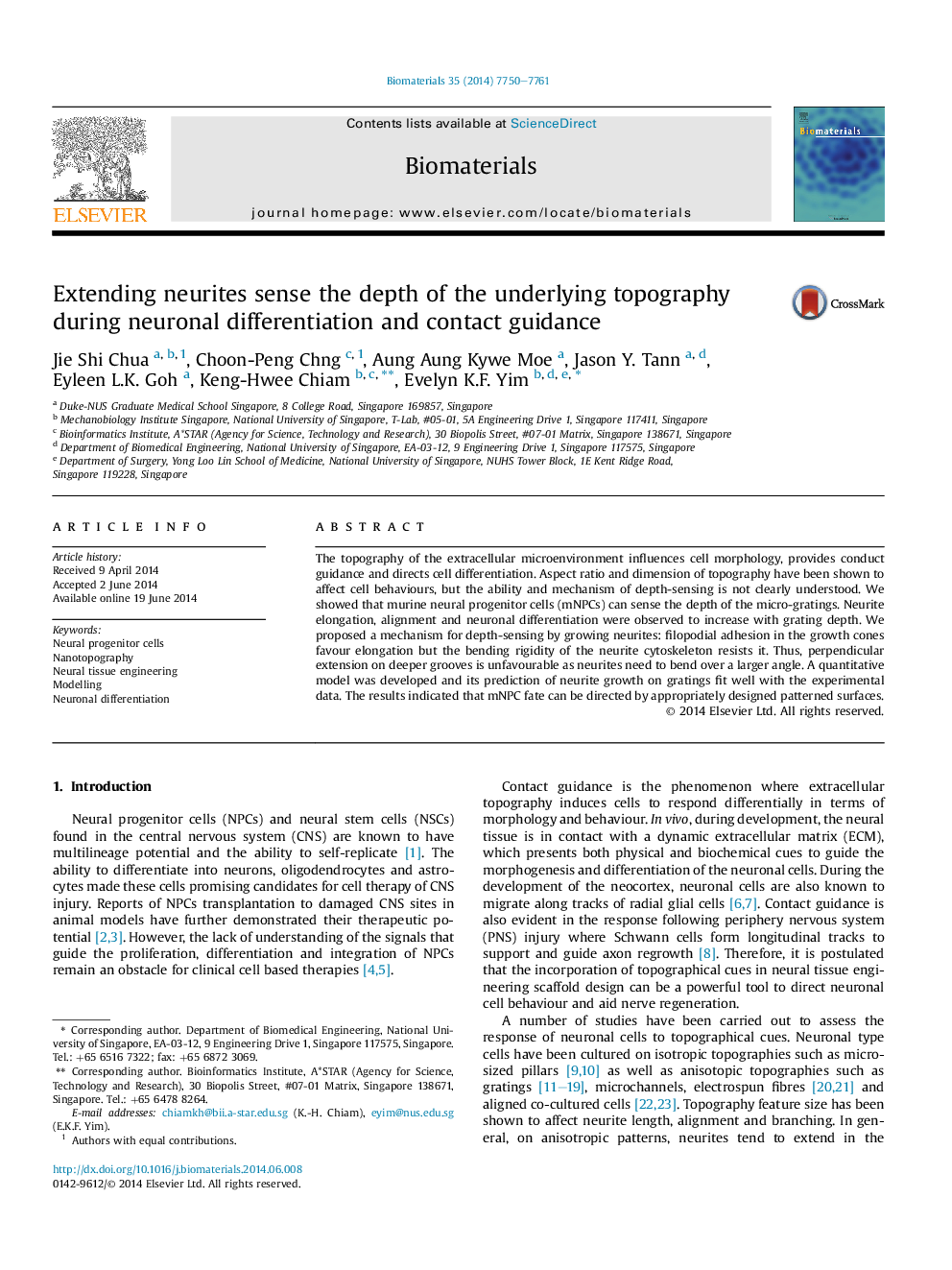| Article ID | Journal | Published Year | Pages | File Type |
|---|---|---|---|---|
| 5860 | Biomaterials | 2014 | 12 Pages |
The topography of the extracellular microenvironment influences cell morphology, provides conduct guidance and directs cell differentiation. Aspect ratio and dimension of topography have been shown to affect cell behaviours, but the ability and mechanism of depth-sensing is not clearly understood. We showed that murine neural progenitor cells (mNPCs) can sense the depth of the micro-gratings. Neurite elongation, alignment and neuronal differentiation were observed to increase with grating depth. We proposed a mechanism for depth-sensing by growing neurites: filopodial adhesion in the growth cones favour elongation but the bending rigidity of the neurite cytoskeleton resists it. Thus, perpendicular extension on deeper grooves is unfavourable as neurites need to bend over a larger angle. A quantitative model was developed and its prediction of neurite growth on gratings fit well with the experimental data. The results indicated that mNPC fate can be directed by appropriately designed patterned surfaces.
